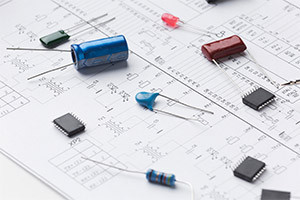In this course, you will learn about the basic operation of the BJT amplifier, and also, how the gain is affected by various parameters. Improved biasing schemes, and also, an introduction to the basic form of the BJT small signal model will also be covered in this course. Then, the course will teach you about the common emitter amplifier, and also, combining the DC and the AC solutions.
This course will also teach you about an introduction to the general representation of an amplifier, and also, the advantages of an operational amplifier or op-amp. The op-amp circuit analysis, input and output resistances of the non-inverting amplifier will also be covered in the course. Lastly, you will learn about the operation of the summer, as well as the common-mode rejection ratio or CMRR.
This course is important for learners who want to understand the basic operations of the BJT amplifier. You will also gain an understanding of the operations and advantages of the operational amplifiers or op-amps. Begin this course now to understand the working principles of the BJT amplifier and operational amplifiers.
What You Will Learn In This Free Course
View All Learning Outcomes View Less All Alison courses are free to enrol, study, and complete. To successfully complete this Certificate course and become an Alison Graduate, you need to achieve 80% or higher in each course assessment.
Once you have completed this Certificate course, you have the option to acquire an official Certificate, which is a great way to share your achievement with the world.
Your Alison certificate is:
- Ideal for sharing with potential employers.
- Great for your CV, professional social media profiles, and job applications.
- An indication of your commitment to continuously learn, upskill, and achieve high results.
- An incentive for you to continue empowering yourself through lifelong learning.
Alison offers 2 types of Certificate for completed Certificate courses:
- Digital Certificate: a downloadable Certificate in PDF format immediately available to you when you complete your purchase.
- Physical Certificate: a physical version of your officially branded and security-marked Certificate
All Certificate are available to purchase through the Alison Shop. For more information on purchasing Alison Certificate, please visit our FAQs. If you decide not to purchase your Alison Certificate, you can still demonstrate your achievement by sharing your Learner Record or Learner Achievement Verification, both of which are accessible from your Account Settings.











 Avg. Hours
Avg. Hours  Contains Video
Contains Video  CPD Accredited
CPD Accredited 
 Total XP:
Total XP: 
 Knowledge & Skills You Will Learn
Knowledge & Skills You Will Learn 







